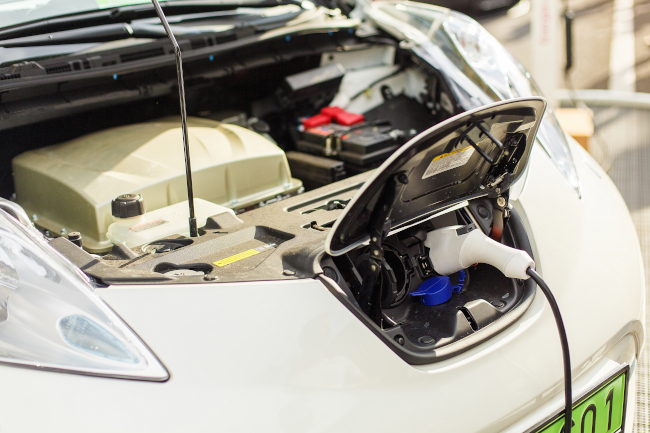Our expensive “window of opportunity”
 The Canadian and Ontario governments’ $15-billion deal to ensure construction of a Stellantis battery plant in Windsor, Ont., will spur investment across Canada’s electric-vehicle ecosystem, says federal finance minister Chrystia Freeland.
The Canadian and Ontario governments’ $15-billion deal to ensure construction of a Stellantis battery plant in Windsor, Ont., will spur investment across Canada’s electric-vehicle ecosystem, says federal finance minister Chrystia Freeland.
The federal Liberal government and Ontario’s Conservative regime agreed to share the cost of Stellantis plant performance incentives on a two-thirds to one-third basis. The two governments say the deal is subject to conditions and benefits to Canada as a whole and Ontario.
The agreement came after Stellantis, a Big Three US-based automaker which manufactures Chrysler, Jeep, Fiat and other name-brand autos, had halted construction on the Windsor plant and called for more Canadian government incentives in wake of the US Inflation Reduction Act. Stellantis also threatened to switch gears and build the plant in the US instead of Windsor.
As a result of Thursday’s agreement, construction on the Stellantis-LG Energy Solution Windsor plant has resumed. The deal includes a Volkswagen EV battery plant in St. Thomas, Ont., where Prime Minister Justin Trudeau’s Liberal government and Ontario Premier Doug Ford’s government agreed provide $13 billion worth of incentives on a similar two-thirds to one-third split.
“Together, the Stellantis and VW investments, and investments that we have been making through our green industrial policy, mean that Canada today is ranked second in the world, when it comes to electric battery manufacturing,” said Freeland, in response to a question from Research Money at an unrelated Vancouver news conference last week. “That is a huge accomplishment. It is hugely important for our country. And it's important for today, and it will be even more important for the future. So these investments are important because they are directly going to guarantee jobs — jobs in Windsor, jobs in Brampton, jobs in St. Thomas. But they're even more important because of the ecosystem that they are going to create, an ecosystem that will stretch from the critical minerals and metals mines in our country, through the processing of those critical minerals, to the manufacture of batteries, to the production of electric vehicles in Canada, to the creation of charging stations in Canada.”
The agreement requires Stellantis to uphold an EV production mandate stipulated by the feds and Ontario government at the automaker’s Brampton, Ont. plant. Freeland argued Canada had to “step up” and offer Stellantis more incentives for the battery plant, after US President Joe Biden’s Inflation Reduction Act (IRA) provided $500 billion worth of perks, largely to clean energy projects.
“This is the year when the world is building the clean economy,” she said. “And, this is the year when it's going to be decided, which countries in the world have the industries and the great-paying jobs that are going to build that green economy. Our government was absolutely determined that Canada get its fair share of those green jobs.”
A window of opportunity, which only comes along every four or five generations, is closing and big companies are making their investment decisions today, so Ottawa had to act, she added, citing comments that US President Joe Biden made in Canada’s capital in March. Freeland’s reference to the closing window of opportunity also echoed comments made by Joe Loparco, co-president of auto parts manufacturers and suppliers AGS, during Research Money’s 22nd annual conference in Ottawa in April. During the conference, Loparco and other automotive industry experts called for a private-sector led national industrial strategy to rev up the Canadian EV ecosystem.
“In the next two to five years, major investment decisions are being made,” he said in an interview with Research Money. “And, if we miss that window of opportunity, people will locate their operations outside of Canada, and it'll be very hard to bring them back to Canada. So we need to seize this window of opportunity with technological change, like electric vehicles, happening.”
But Freeland sidestepped the question of whether Ottawa would provide incentives for businesses feeding the Stellantis battery plant. She noted that the federal government has created $120 billion in tax credits as part of its green economy strategy and suggested that the $15-billion Clean Growth Fund will also pay off.
“The Clean Growth Fund is beginning to do its work,” said Freeland. “So we are, really, just at the beginning of a significant wave of investment into the Canadian economy, into Canadian industry, into Canadian mining."
Freeland indicated that she is not concerned that major companies will only invest in Canada if the federal government gives them billions of dollars in subsidies.
“Look, the IRA, changed the rules of the game,” she said, suggesting that if Canada had not acted, the Canadian economy would have been hollowed out and the country would not have been a player in the green economy. “So, we have put the measures in place that we need to have. And, this is about building the economy of today and ensuring that we have the economy of tomorrow.”
Under other terms of the deal:
- The federal and Ontario governments will only provide a performance incentive to Stellantis for battery production and sales in line with the conditions of the Volkswagen plant agreement;
- Stellantis will invest more money across Canada, with the extra investment including the establishment of a research and development facility in Windsor;
- The performance incentive will be US$45 per kilowatt hour — $35 for battery cells and $10 per KWH for modules.
The Stellantis deal will only last as long as the IRA remains in effect.
“The incentives are kept so that Canada's liability is not unlimited,” said Freeland. “And, the incentives will only be enforced so long as the IRA is in force.”
If the US measures were to be withdrawn, then the Canadian deal with Stellantis would “no longer be in place.”
However, Dr. Peter Frise, associate dean of engineering at the University of Windsor questioned whether the Stellantis deal will lead to more government investment in businesses that support the EV battery and overall EV ecosystems.
“I would think so,” Frise told Research Money last weekend. “But it is difficult to say for sure, because each project seems to be dealt with on an individual, case-by-case basis and there isn’t a firm policy on these types of investments. While this affords the government some flexibility, in my view, it can lead to difficulties for Canada to compete with jurisdictions where there is the type of predictability that most businesses value.”
Frise was among the experts who called for a national private-sector led national industrial strategy during the Research Money conference in April.
But, he believes, the Stellantis and Volkswagen plants, other private battery-related investments and the “equally important” conversion of traditional auto manufacturing facilities into EV plants will likely foster “a good deal more” activity in the EV space among suppliers and other product developers.
“And, this will facilitate the creation of new, high-value employment and help secure Canada’s automotive sector for many years,” he said.
On the Research Money conference’s sidelines in April, he said Canada’s manufactured content (i.e. parts and accessories) in a traditional automobile is small in comparison to the US. But the EV battery will account for 30-50 percent of the car's value, a much different scenario.
"That means that a lot more of the dollars in a car will be coming from Canadian plants,” he said, adding that if manufacturers play their cards right, most of the companies that produce traditional parts will also be able to make EV parts. “But those companies will have to continue to innovate, and I think the pace of innovation will need to accelerate."
As for the required increased Stellantis research and development investment in Windsor, Frise said last weekend that a new EV technology advanced R&D lab is slated to be built at the University of Windsor’s Automotive Research and Development Centre (ARDC). Stellantis and its predecessor companies have had a strong R&D and product development presence at their facilities in Windsor, while also investing heavily in the university’s 200,000-square-foot ARDC, he added.
“While few specifics are available at the moment, the new electric-vehicle technology R&D lab to be built at ARDC is the latest phase in the growth of the complex, and we are very excited about the prospects for leading-edge research and the opportunities it will provide for our faculty and students to build their careers at the forefront of EV technologies for the future,” he said.
Frise remains confident support for the Stellantis battery plant will pay off in the long run. Activity enhanced in the EV auto parts segment is accompanied by an upswing in EV-related research and education at Canadian universities, he noted, offering the example of his university’s Centre for Hybrid Automotive Research and Green Energy (CHARGE) lab. The facility was recently doubled in size, due to a major influx of industry projects and strong demand for engineers with experience in the next generation of motors, controllers, battery-management systems, and batteries themselves.
“Experience has shown that once a major foundational investment is made, large facilities such as these battery plants and big vehicle-assembly plants will operate and create value for many decades,” said Frise. “And, so, I am confident that the investments made by our various governments will pay off handsomely in much expanded economic activity, secure high-value jobs and, of course, tax revenue — long after the costs of the investments are recouped.”
But the Canadian Taxpayers Federation is balking at the large federal-provincial investment. The group is calling on federal opposition parties to oppose the deal.
“The feds need to draw the line somewhere because taxpayers can’t afford to bankroll everyone and their dog who wants to make batteries,” says Franco Terrazzano, the CTF’s federal director. “It’s wrong for Prime Minister Justin Trudeau to choose big corporations over struggling taxpayers and it’s wrong for the opposition leaders to sit on their hands and say nothing.”
R$
| Organizations: | |
| People: | |
| Topics: |
Events For Leaders in
Science, Tech, Innovation, and Policy
Discuss and learn from those in the know at our virtual and in-person events.
See Upcoming Events
You have 0 free articles remaining.
Don't miss out - start your free trial today.
Start your FREE trial Already a member? Log in
By using this website, you agree to our use of cookies. We use cookies to provide you with a great experience and to help our website run effectively in accordance with our Privacy Policy and Terms of Service.





